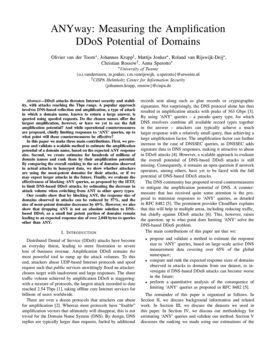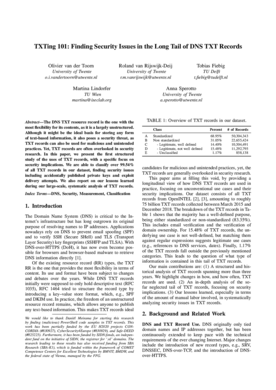DDoS attacks threaten Internet security and stability, with attacks reaching the Tbps range. A popular approach involves DNS-based reflection and amplification, a type of attack in which a domain name, known to return a large answer, is queried using spoofed requests. Do the chosen names offer the largest amplification, however, or have we yet to see the full amplification potential? And while operational countermeasures are proposed, chiefly limiting responses to ‘ANY’ queries, up to what point will these countermeasures be effective? In this paper we make three main contributions. First, we propose and validate a scalable method to estimate the amplification potential of a domain name, based on the expected ANY response size. Second, we create estimates for hundreds of millions of domain names and rank them by their amplification potential. By comparing the overall ranking to the set of domains observed in actual attacks in honeypot data, we show whether attackers are using the most-potent domains for their attacks, or if we may expect larger attacks in the future. Finally, we evaluate the effectiveness of blocking ANY queries, as proposed by the IETF, to limit DNS-based DDoS attacks, by estimating the decrease in attack volume when switching from ANY to other query types. Our results show that by blocking ANY, the response size of domains observed in attacks can be reduced by 57%, and the size of most-potent domains decreases by 69%. However, we also show that dropping ANY is not an absolute solution to DNS-based DDoS, as a small but potent portion of domains remain leading to an expected response size of over 2,048 bytes to queries other than ANY.
Posts for: #TXT
TXTing 101: Finding Security Issues in the Long Tail of DNS TXT Records
The DNS TXT resource record is the one that without doubt provide users with the most flexibility of content, as it is a largely unstructured. Although it might be the ideal basis for storing any form of text-based information, it also poses a security threat, as TXT records can also be used for malicious and unintended practices. Yet, we reckon that TXT records are often overlooked in security research. In this paper, we present the first structured study of the uses of TXT records, with a specific focus on security implications. We are able to classify over 99.54% of all TXT records in our dataset, finding security issues including accidentally published private keys and exploit delivery attempts. We also report our lessons learned while dealing with a large-scale, systematic analysis of TXT records.

